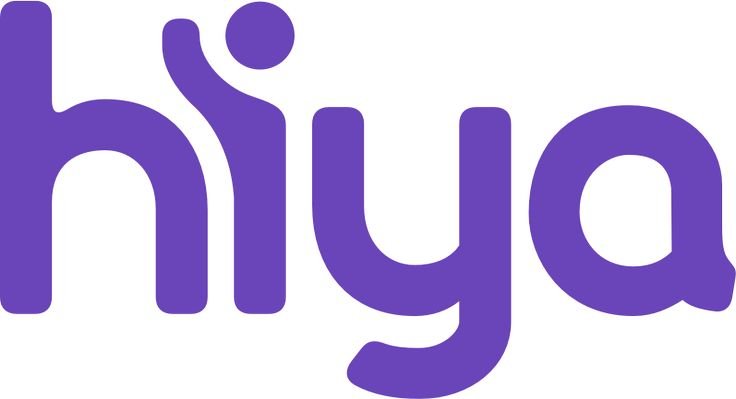The Rising Tide of Deepfake Fraud: A New Era of Scams
March 1, 2025, 6:44 pm

Location: United States, Texas, Austin
Employees: 10001+
Founded date: 2004
Total raised: $5M

Location: United States, Washington, Seattle
Employees: 51-200
Founded date: 2016
Total raised: $18M
In the digital age, where technology evolves at lightning speed, a new predator lurks in the shadows: deepfake fraud. This menace is not just a whisper; it’s a roar. According to a recent report from Hiya, deepfake scams are surging, leaving a trail of financial devastation in their wake.
Imagine receiving a call from a loved one, only to discover it’s a clever imitation designed to extract your hard-earned money. This is the reality for many victims of deepfake voice scams. The Hiya report reveals that 31% of U.S. consumers encountered these scams in the past year. The figures are staggering. Over 30% of those targeted fell victim, with losses averaging $539 in the U.S. and even higher in the U.K., where victims reported losses of £1,479 (approximately $1,867).
The landscape of fraud is shifting. Traditional scams are being overshadowed by AI-generated impersonations. Scammers are now cloning voices, impersonating family members, financial institutions, and even government agencies. The art of deception has reached new heights, and the stakes have never been higher.
### The Anatomy of a Deepfake Scam
Deepfake scams are not just random acts of theft; they are meticulously crafted attacks. Scammers exploit the trust we place in familiar voices. They weave narratives that tug at heartstrings or invoke fear. The result? Victims are often left vulnerable, handing over sensitive information without a second thought.
In the U.S., Medicare scams have become the most prevalent form of fraud. These scams peaked during open enrollment, a time when individuals are particularly susceptible. Scammers pose as Medicare representatives, attempting to gather personal details under the guise of providing essential services. The deception is chilling.
Across the Atlantic, the U.K. faces its own set of challenges. HMRC tax scams dominate the landscape, with impersonators threatening legal action for unpaid taxes. The fear of legal repercussions drives victims to comply, often leading to significant financial losses.
In Spain, the narrative shifts again. Here, residents are targeted with fake job offers and unsolicited employment opportunities. Scammers impersonate HR personnel, creating a façade of legitimacy that is hard to see through.
### A Global Epidemic
The Hiya report paints a grim picture of a global epidemic. In Canada, 27% of consumers reported encounters with deepfake fraud calls. The average loss was a staggering $1,479 CAD. Meanwhile, Brazil and Chile lead the pack in spam calls, with consumers receiving an average of 28 calls per person per month. The numbers are alarming, but they tell only part of the story.
Germany, in contrast, stands as a beacon of hope. With only three spam calls per person per month, it seems that the country has found a way to shield its citizens from this rising tide of fraud. But for many others, the threat looms large.
### The Call for Action
As the landscape of fraud evolves, so too must our defenses. The Hiya report underscores the urgent need for greater awareness and stronger protections. Consumers must be educated about the tactics employed by scammers. Knowledge is power, and in this case, it could be the difference between financial security and devastating loss.
Hiya is at the forefront of this battle. Their advanced real-time fraud detection system, Hiya Protect, utilizes adaptive AI and voice detection to block billions of fraudulent calls before they reach consumers. Collaboration with carriers and regulatory bodies is essential to enhance protections against these sophisticated scams.
### The Road Ahead
The future is uncertain, but one thing is clear: deepfake fraud is here to stay. As technology advances, so too will the methods employed by scammers. The challenge lies in staying one step ahead.
Consumers must remain vigilant. Verification is key. If a call seems suspicious, it’s crucial to hang up and verify the identity of the caller through trusted channels.
In a world where trust is easily manipulated, skepticism can be a valuable ally. The rise of deepfake fraud calls is a wake-up call for all of us. It’s a reminder that in the digital age, we must protect ourselves and our loved ones from the shadows that lurk behind the screen.
As we navigate this new terrain, let’s not forget the power of community. Sharing experiences and knowledge can help build a fortress against fraud. Together, we can shine a light on the dark corners of deception and emerge stronger.
In conclusion, deepfake fraud is a formidable foe. But with awareness, education, and advanced technology, we can combat this threat. The fight against fraud is ongoing, and every call could be a potential trap. Stay alert, stay informed, and protect what matters most.
Imagine receiving a call from a loved one, only to discover it’s a clever imitation designed to extract your hard-earned money. This is the reality for many victims of deepfake voice scams. The Hiya report reveals that 31% of U.S. consumers encountered these scams in the past year. The figures are staggering. Over 30% of those targeted fell victim, with losses averaging $539 in the U.S. and even higher in the U.K., where victims reported losses of £1,479 (approximately $1,867).
The landscape of fraud is shifting. Traditional scams are being overshadowed by AI-generated impersonations. Scammers are now cloning voices, impersonating family members, financial institutions, and even government agencies. The art of deception has reached new heights, and the stakes have never been higher.
### The Anatomy of a Deepfake Scam
Deepfake scams are not just random acts of theft; they are meticulously crafted attacks. Scammers exploit the trust we place in familiar voices. They weave narratives that tug at heartstrings or invoke fear. The result? Victims are often left vulnerable, handing over sensitive information without a second thought.
In the U.S., Medicare scams have become the most prevalent form of fraud. These scams peaked during open enrollment, a time when individuals are particularly susceptible. Scammers pose as Medicare representatives, attempting to gather personal details under the guise of providing essential services. The deception is chilling.
Across the Atlantic, the U.K. faces its own set of challenges. HMRC tax scams dominate the landscape, with impersonators threatening legal action for unpaid taxes. The fear of legal repercussions drives victims to comply, often leading to significant financial losses.
In Spain, the narrative shifts again. Here, residents are targeted with fake job offers and unsolicited employment opportunities. Scammers impersonate HR personnel, creating a façade of legitimacy that is hard to see through.
### A Global Epidemic
The Hiya report paints a grim picture of a global epidemic. In Canada, 27% of consumers reported encounters with deepfake fraud calls. The average loss was a staggering $1,479 CAD. Meanwhile, Brazil and Chile lead the pack in spam calls, with consumers receiving an average of 28 calls per person per month. The numbers are alarming, but they tell only part of the story.
Germany, in contrast, stands as a beacon of hope. With only three spam calls per person per month, it seems that the country has found a way to shield its citizens from this rising tide of fraud. But for many others, the threat looms large.
### The Call for Action
As the landscape of fraud evolves, so too must our defenses. The Hiya report underscores the urgent need for greater awareness and stronger protections. Consumers must be educated about the tactics employed by scammers. Knowledge is power, and in this case, it could be the difference between financial security and devastating loss.
Hiya is at the forefront of this battle. Their advanced real-time fraud detection system, Hiya Protect, utilizes adaptive AI and voice detection to block billions of fraudulent calls before they reach consumers. Collaboration with carriers and regulatory bodies is essential to enhance protections against these sophisticated scams.
### The Road Ahead
The future is uncertain, but one thing is clear: deepfake fraud is here to stay. As technology advances, so too will the methods employed by scammers. The challenge lies in staying one step ahead.
Consumers must remain vigilant. Verification is key. If a call seems suspicious, it’s crucial to hang up and verify the identity of the caller through trusted channels.
In a world where trust is easily manipulated, skepticism can be a valuable ally. The rise of deepfake fraud calls is a wake-up call for all of us. It’s a reminder that in the digital age, we must protect ourselves and our loved ones from the shadows that lurk behind the screen.
As we navigate this new terrain, let’s not forget the power of community. Sharing experiences and knowledge can help build a fortress against fraud. Together, we can shine a light on the dark corners of deception and emerge stronger.
In conclusion, deepfake fraud is a formidable foe. But with awareness, education, and advanced technology, we can combat this threat. The fight against fraud is ongoing, and every call could be a potential trap. Stay alert, stay informed, and protect what matters most.